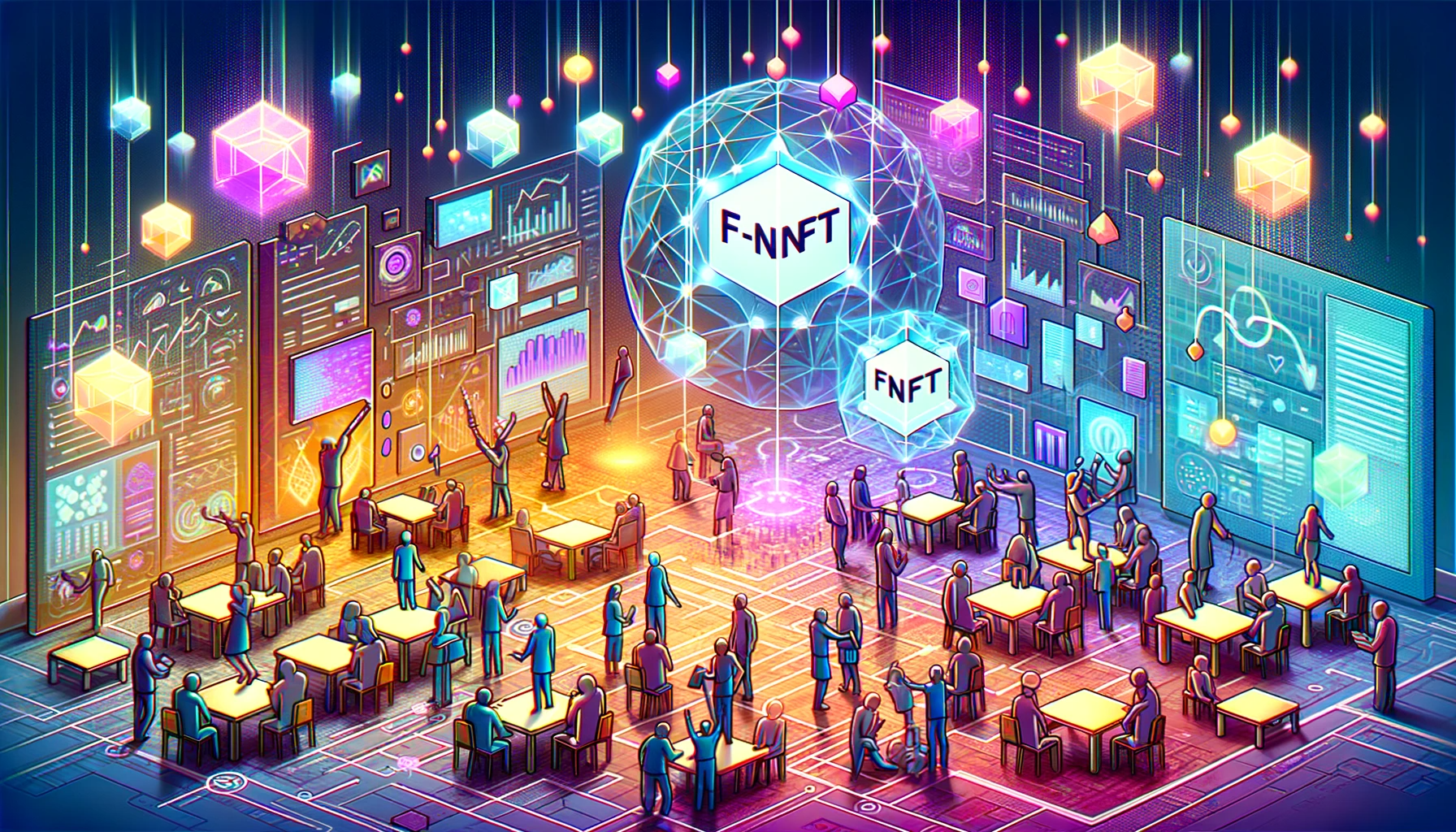Non-fungible tokens (NFTs) are unique digital assets in blockchain networks. Their uniqueness creates high demand and consequently high value, making them primarily accessible to wealthy investors.
In this context, the concept of fractional NFT ownership (F-NFT) emerges, opening doors for mid-level and entry-level investors to the NFT market. Similar to owning shares in a company, F-NFT allows investors to own portions of unique digital tokens.
So, what is fractional NFT ownership (F-NFT) and how does it work?
- Principles of fractional NFT storage
- Difference between NFT and F-NFT
- Ways to obtain fractional ownership of NFTs
- Benefits of owning F-NFTs

Principles of fractional NFT storage
Fractional ownership of NFTs, known as F-NFT, involves the process of dividing a single whole NFT token into smaller fragments. This allows multiple investors to own shares in the same NFT. A smart contract is used to create these fractional shares, distributing the original NFT into a certain number of smaller tokens associated with the initial NFT.
Each of these fractional tokens reflects a share of ownership in the NFT, allowing their owners to exchange or sell them on NFT-supporting platforms.
As for the mechanism of fractional NFT ownership, it most often uses the Ethereum blockchain and the ERC-721 token standard. The process starts with locking the original NFT in a smart contract, which automatically performs certain actions when predefined conditions are met. This contract then splits the NFT into many small parts (ERC-20 tokens), based on set parameters such as:
- total number of shares,
- initial price,
- unique attributes.
Each fractional ERC-20 token represents a share of ownership in the original NFT, and they can be listed for sale at a fixed price or sold immediately after their creation.
For example, consider an art piece transformed into an NFT and valued at 100 million dollars, unaffordable for most investors. Using a smart contract, this NFT can be divided into 20,000 fractional ERC-20 tokens, each priced at 5000 dollars, making the investment accessible at 20 dollars per share, attracting a wide range of investors.
Fractional ownership of NFTs is not limited to Ethereum. Splitting can be carried out on any blockchain that supports NFTs and smart contracts, including networks like Solana, Polygon, and Cardano, which offer advantages in terms of low fees and fast transactions.
Difference Between NFT and F-NFT
Fractional NFT ownership allows investors to own a portion of a whole NFT token, whereas traditional NFTs represent complete digital objects or artworks. The main difference is that owning a traditional NFT means having a unique asset in its entirety, while fractional ownership divides this asset into many smaller parts, providing ownership of a segment of the original NFT.
Interestingly, the process of splitting an NFT into parts can be reversible. Fractional shares of an NFT can be reassembled back into a single complete token. This is achieved through a mechanism built into the smart contract, which allows all fractional shares to be merged back into the original NFT.
This process often takes place through an auction mechanism, where the remaining shares of the NFT are offered for buyout. During such an auction, share holders can either sell their shares to the buyout initiator or place a higher bid themselves to retain their shares. If the buyout process is successful, all shares are consolidated, and the buyer gains full ownership of the entire NFT, allowing them to restore the asset to its original whole form.
Ways to Obtain Fractional Ownership of NFTs
In light of the growing interest in F-NFTs, the market is witnessing the emergence of platforms specialized in providing opportunities for acquiring and managing fractional ownership of NFTs.
Platforms like Otis make it accessible for private investors to purchase shares in NFTs and other digital assets. This allows users to not only acquire shares in NFTs but also manage their investment portfolios and trade assets in real-time.
Unicly merges the world of NFTs with decentralized finance (DeFi), offering a comprehensive platform for creating, fragmenting, and trading NFTs. Unicly promises assured liquidity for assets on its platform and provides the opportunity to own shares in various NFTs. The platform also supports a multitude of NFT standards, offering users the chance to earn its unique token by providing liquidity.
Fractional allows investors to buy, sell, and mint shares in NFTs, offering access to sought-after NFTs. This platform actively encourages community building and support around popular NFT collections, strengthening the social aspect of investing in fractional ownership.

Benefits of Owning F-NFTs
Fractional ownership of NFTs, or F-NFTs, offers investors the opportunity to own shares in valuable and large NFTs. This approach not only makes investing in NFTs more accessible but can also provide share owners with certain rights to manage the corresponding NFT platform. Moreover, it facilitates more active involvement and quick access to the evolving world of NFTs.
Additional benefits include:
| Benefit | Description |
|---|---|
| Enhanced Access to NFTs | High prices of NFTs can exclude many potential investors from the market. Dividing NFTs into smaller parts lowers the entry barrier, making NFTs accessible to a wider audience. Any increase in the value of the original NFT is reflected in the value of each share, benefiting the owners. |
| Simplification of Price Determination | Setting prices for new NFTs can be challenging due to their limited transaction history. Fragmenting NFTs simplifies this process, allowing multiple shares to circulate in the market and quickly finding their market price based on demand and supply. |
| Increased Liquidity | The uniqueness of NFTs can make them difficult to sell, especially for valuable specimens. Using ERC-20 tokens to represent shares in NFTs simplifies trading these shares on secondary markets. Investors can more quickly and easily convert their investments into cash without waiting to sell the entire NFT. |
Fractional ownership of NFTs offers a convenient entry into the world of blockchain technologies, providing a simple and economically affordable way to participate. By purchasing just a part of an NFT, you can diversify your investments and seize the opportunity to benefit from the growing interest in these digital assets.




